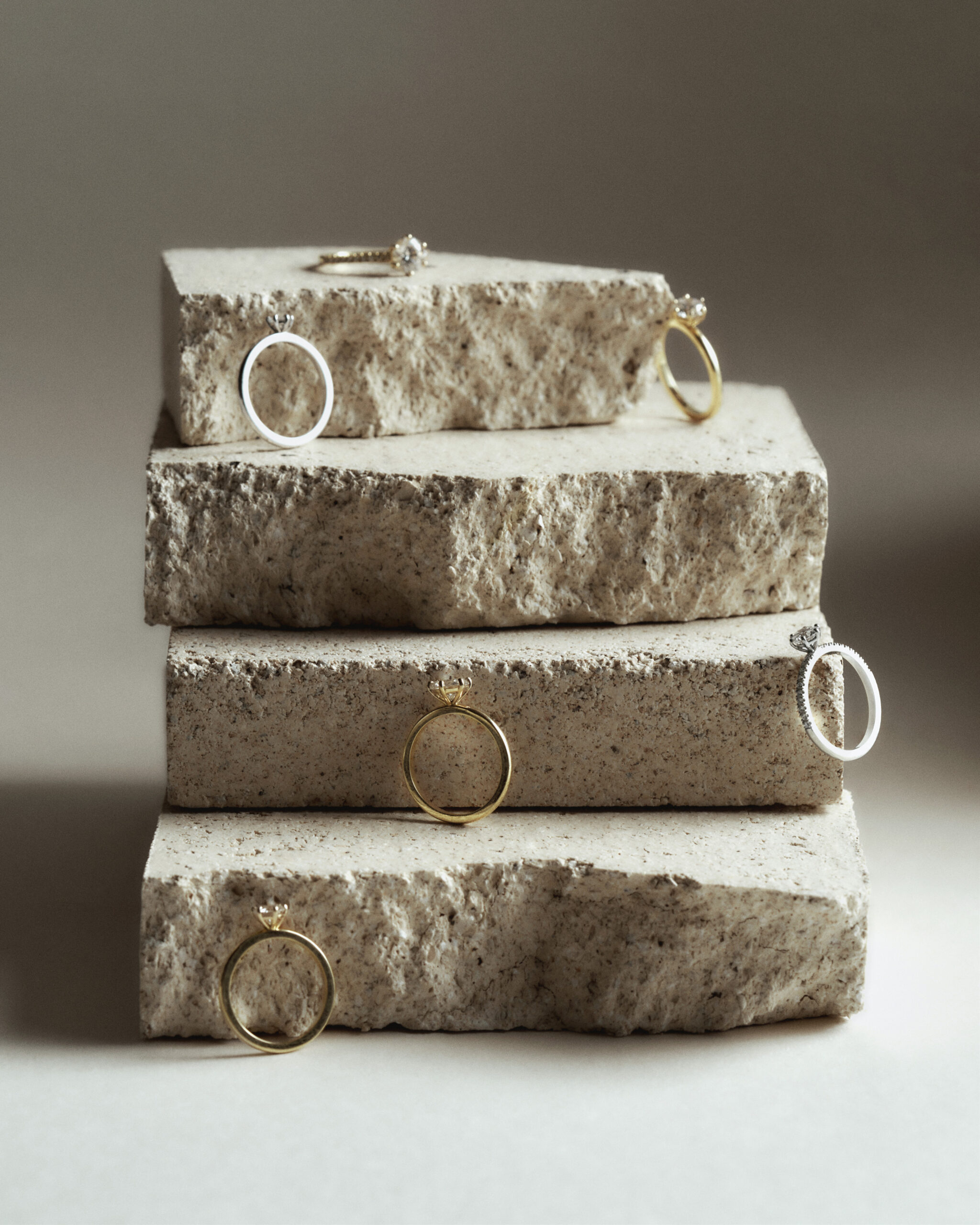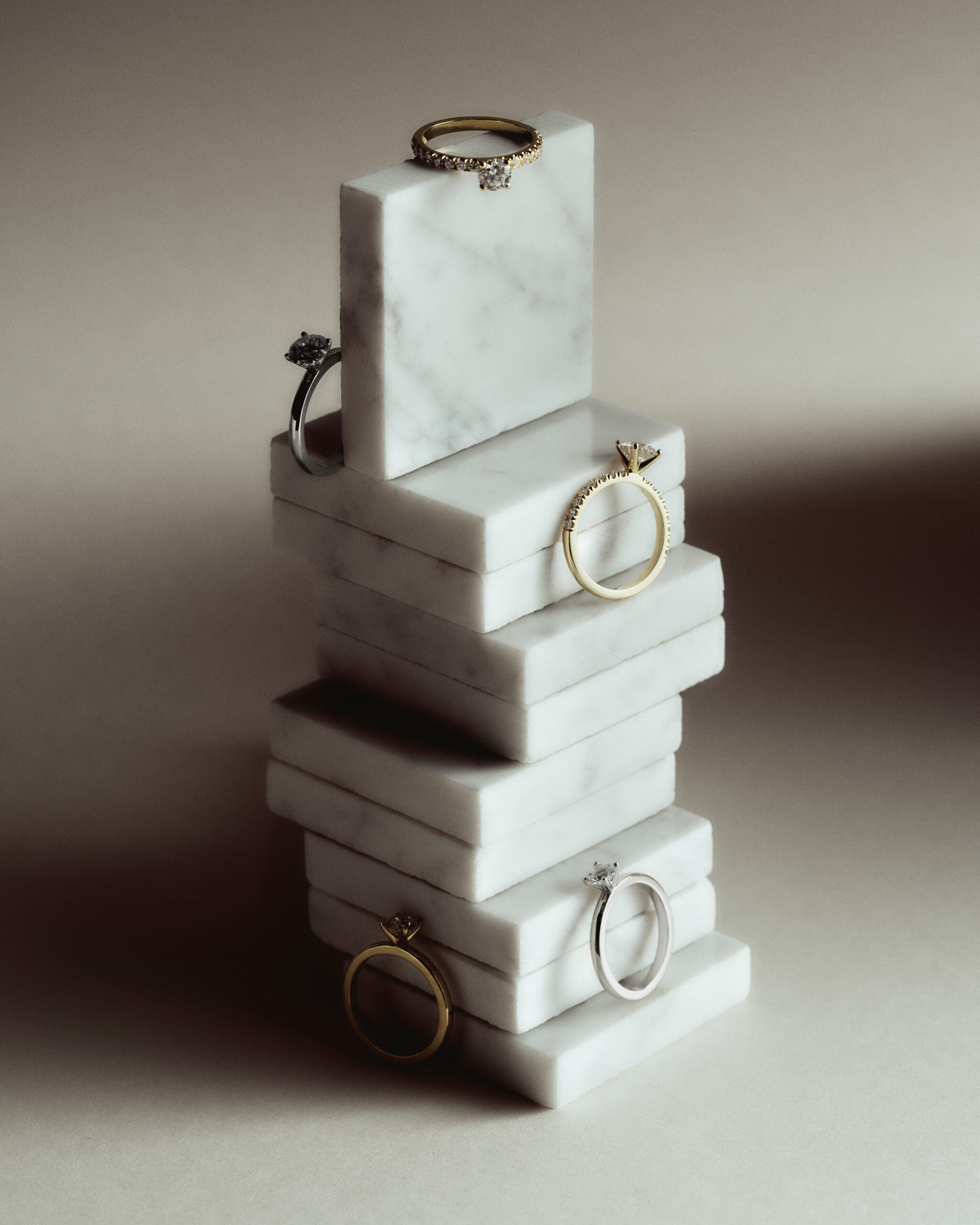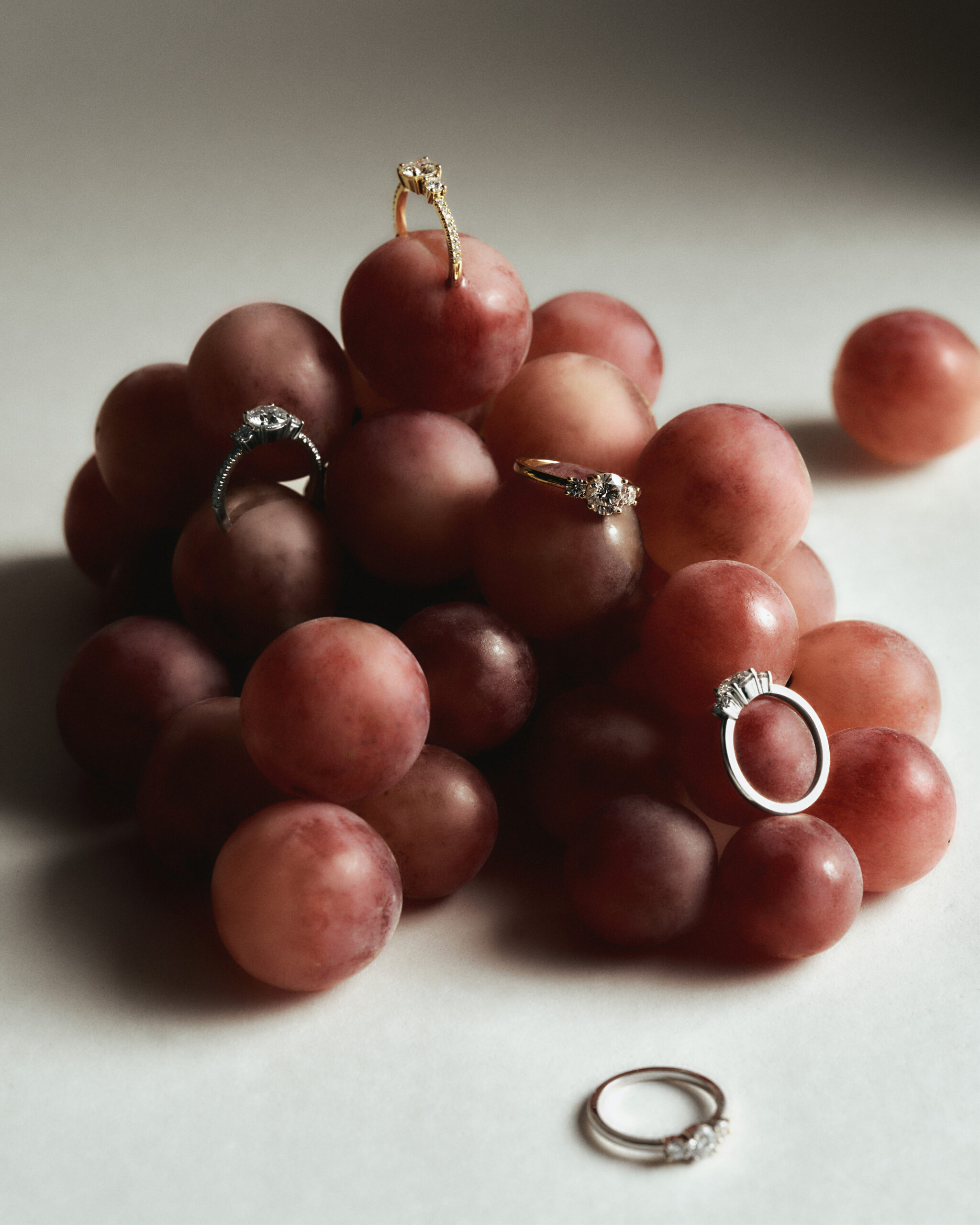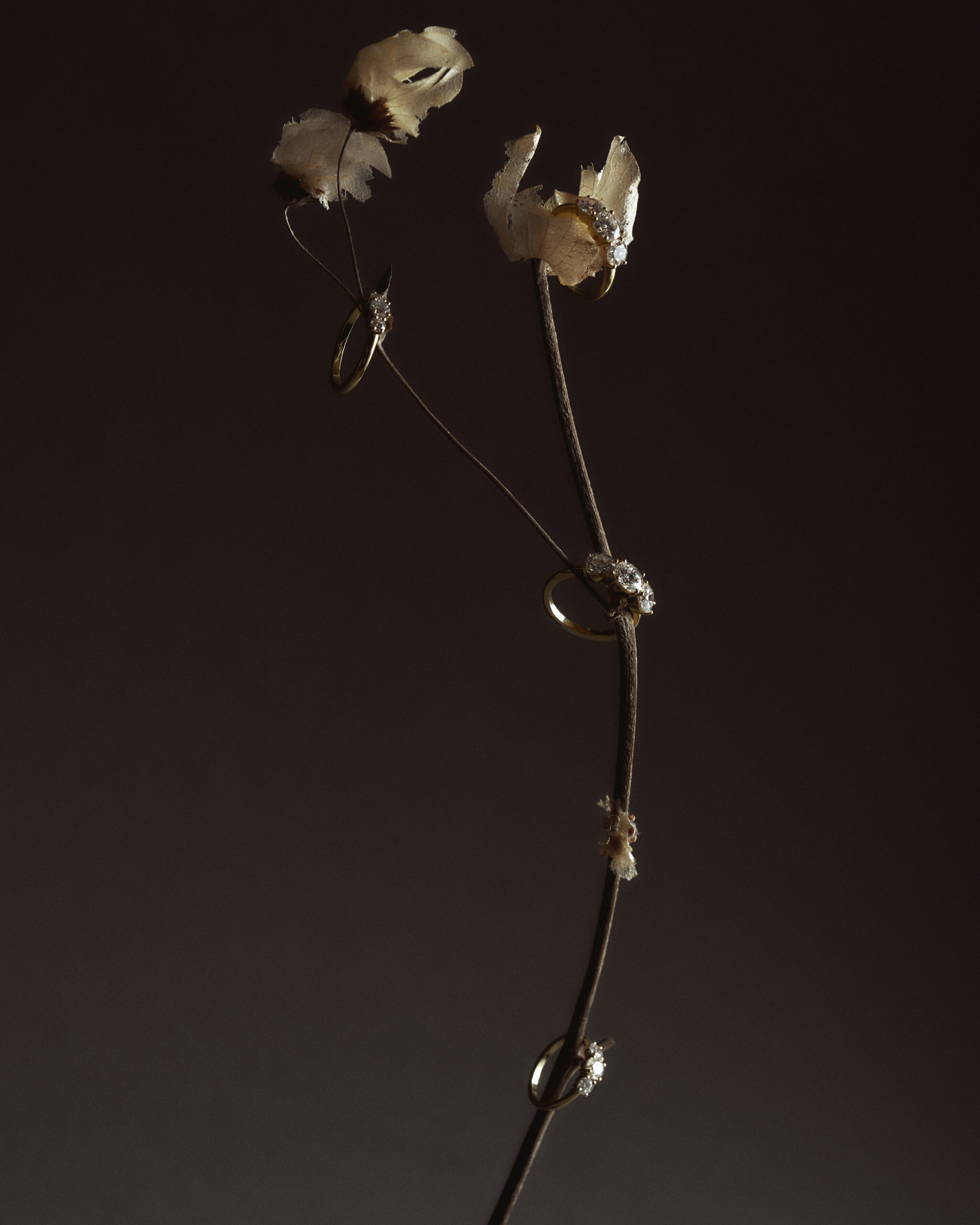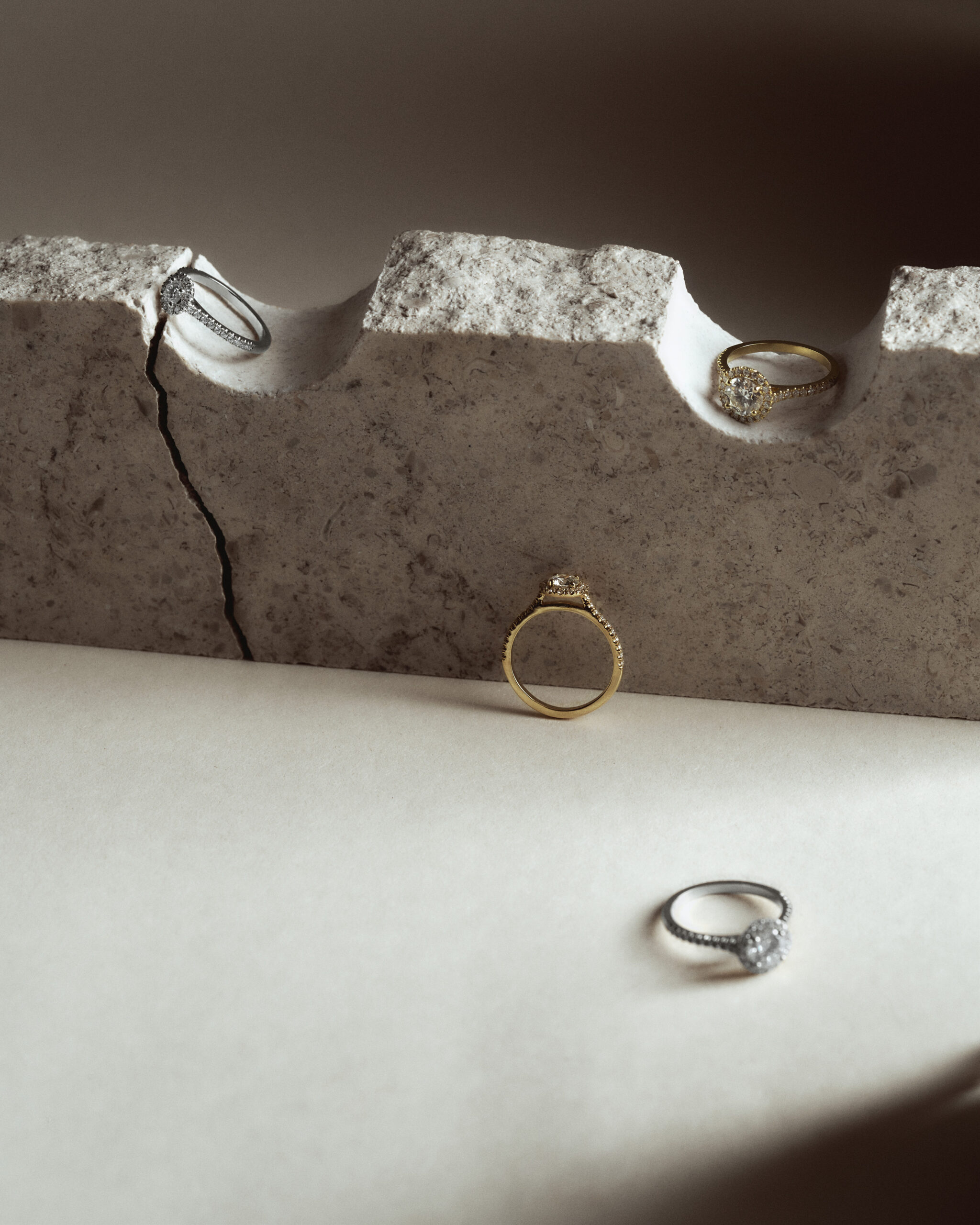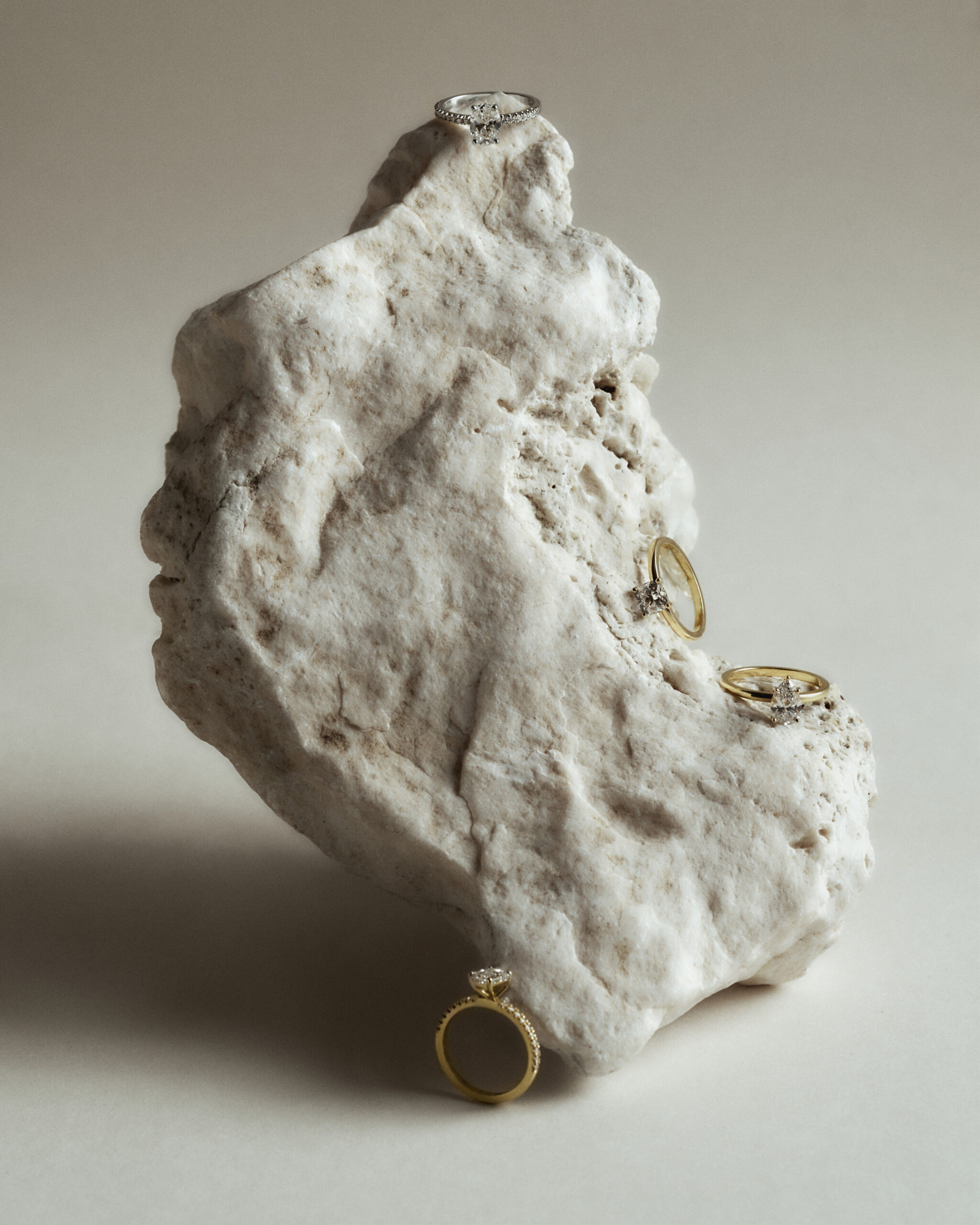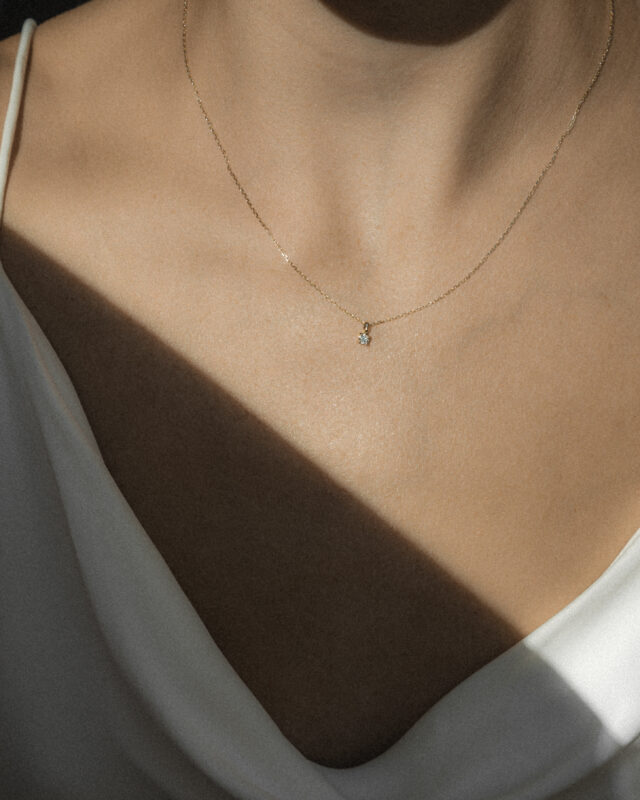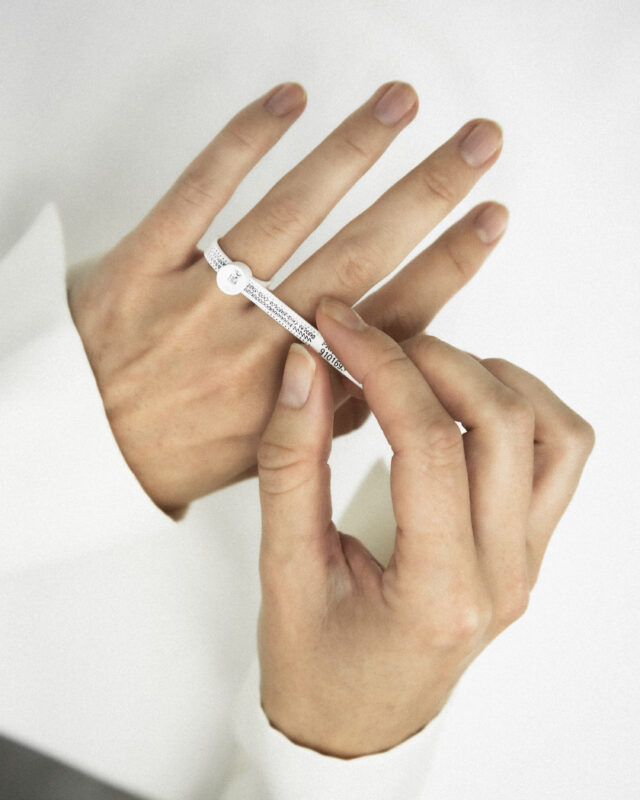What They Have in Common
Lab-grown and natural diamonds are identical in how they look, perform, and endure. They share the same atomic structure — pure carbon arranged in a crystalline form — which gives them their brilliance, fire, and hardness. Both are graded using the same criteria, the 4Cs (cut, color, clarity, and carat), and both are considered genuine diamonds by leading gemological institutes. Whether grown in a controlled environment or formed beneath the earth, a diamond’s beauty lies in its light — how it captures and reflects the world around it. In everyday wear, there is no visual or performance difference between lab-grown and natural diamonds.
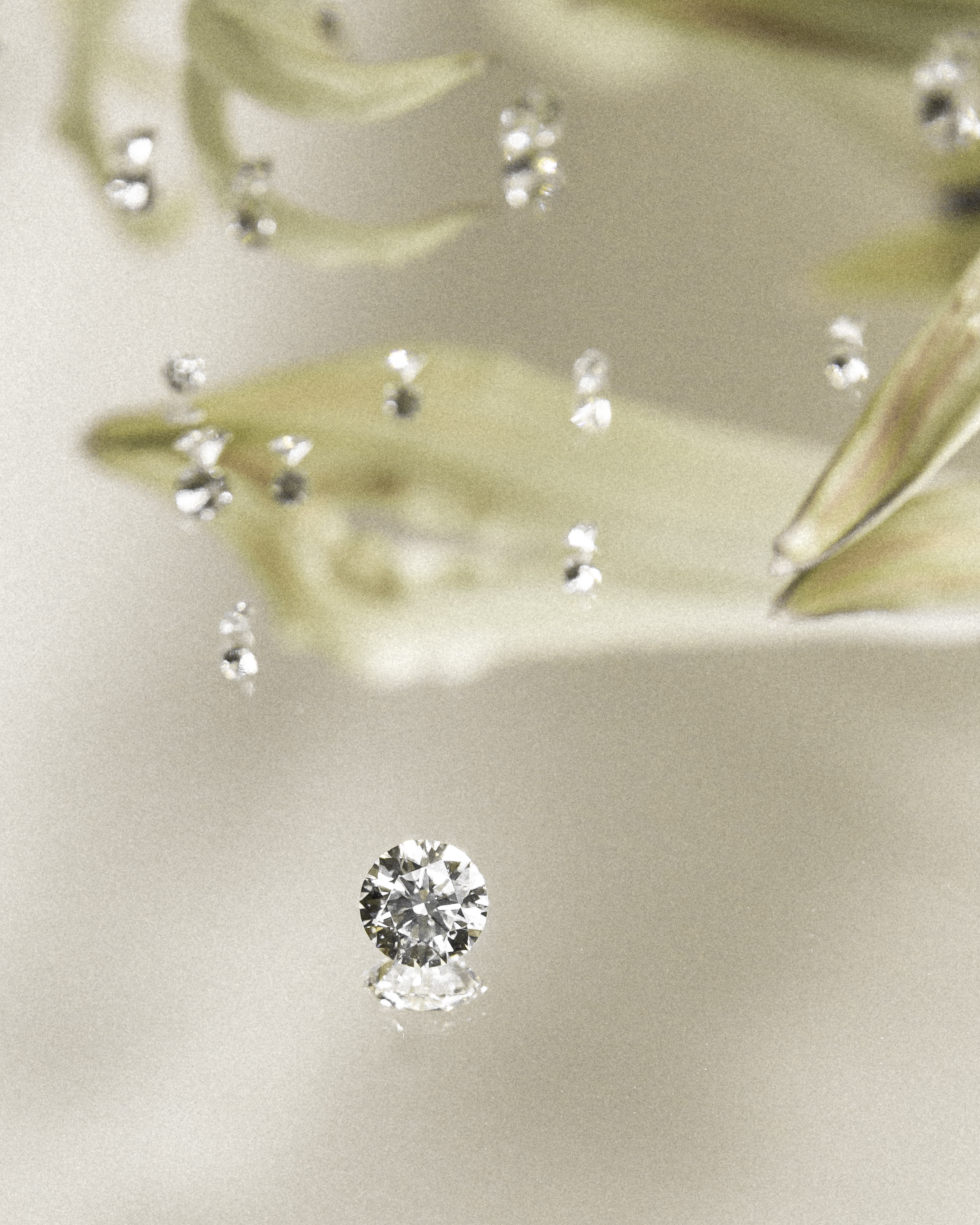
The Key Difference
The primary difference between lab-grown and natural diamonds is how they are formed and the timeline of their creation. Natural diamonds develop under intense heat, pressure, and time — geological processes that unfold over billions of years. Lab-grown diamonds replicate these same forces in a modern environment, allowing the same crystal structure to form over a much shorter period. This difference in origin does not change what the diamond is — only how it came to be. For some, the rarity and history of a natural diamond hold deep meaning. For others, a lab-grown diamond represents innovation, conscious choice, and accessibility without compromise.
How They Are Formed
Natural diamonds originate deep within the Earth’s mantle, typically 140–200 km beneath the surface, where carbon is subjected to extreme heat (around 1,200–1,500°C) and pressures exceeding 45–60 kilobars. Under these rare geological conditions, carbon atoms bond in a tetrahedral structure, creating diamond crystals over one to three billion years. These crystals are then brought closer to the surface through volcanic eruptions in kimberlite pipes, where they are discovered and carefully extracted. Lab-grown diamonds are created using advanced technologies that replicate this process with remarkable precision, compressing geological phenomena into a controlled environment. HPHT (High Pressure High Temperature) recreates mantle-like conditions by applying intense heat and pressure to a carbon source around a diamond seed. Under these forces, carbon atoms migrate and crystallize, layer by layer, into a diamond. CVD (Chemical Vapor Deposition) begins with a diamond seed placed in a vacuum chamber filled with carbon-rich gas. When the gas is ionized into plasma, carbon atoms separate and deposit onto the seed, growing into a diamond crystal atom by atom. Both methods result in diamonds that are chemically, physically, and optically identical to natural stones. Their growth structure, hardness, refractive properties, and brilliance are the same — confirmed by leading gemological laboratories. In essence, one diamond is shaped by time and geology, the other by science and innovation. The outcome, however, is the same extraordinary material: a brilliant crystal of pure carbon designed to last for generations.
Environmental and Ethical Considerations
Sustainability plays a growing role in fine jewelry today, and both diamond options offer meaningful benefits. Lab-grown diamonds use significantly less land and avoid the ecological disruption associated with traditional mining. Their creation offers traceability from origin to finished stone, making them an appealing choice for those who prioritise modern sustainability practices and innovative craftsmanship. Natural diamonds, when sourced responsibly, support local communities and long-standing artisanal traditions. At Norrfolks, all our natural diamonds are certified conflict-free and responsibly sourced through trusted partners. Their rarity and connection to the earth’s ancient history make them deeply symbolic for many. Both options reflect thoughtful values — simply expressed in different ways. The most important choice is the one that aligns with your principles and feels emotionally meaningful to you.
Price and Value
Both lab-grown and natural diamonds hold enduring value — yet they do so in different ways. Natural diamonds command a higher price due to their geological rarity and finite supply. For many, this sense of scarcity and the enduring cultural significance of natural stones contributes to long-term emotional and perceived value. They also benefit from an established second-hand market, shaped by many decades of tradition and global demand. Lab-grown diamonds offer the same brilliance and craftsmanship at a more accessible price point. This allows some to choose a larger or higher-quality stone within their budget — without compromising on beauty, durability, or meaning. While there is not yet a long-established resale market for lab-grown diamonds, many couples value the opportunity to invest more in design, quality, or shared experiences today. Ultimately, value is shaped by more than market dynamics — it is personal. Whether through rarity and historical legacy, or modern innovation and thoughtful resource use, the right diamond is the one that aligns with your vision, your priorities, and the symbolism you carry forward.
Closing Thought
Whether grown beneath the Earth or created through advanced technology, a diamond carries emotion, commitment, and symbolism. Both lab-grown and natural diamonds represent love — choosing one over the other is not about right or wrong, but about meaning. At Norrfolks, we select each diamond — lab-grown and natural — for its quality, cut, and light. We are here to guide you, answer questions, and help you choose with confidence and clarity. Your diamond should reflect not just who you are today, but the life you are creating together. Choose the one that feels true to your values — and let it become part of your story.
